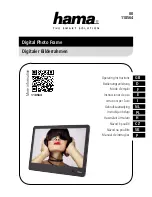
230
Technical Notes—Optional Accessories
CPU lenses can be iden ti fi ed by the presence of CPU contacts. Type G lenses
are marked with a “G” on the lens barrel, type D lenses with a “D.”
Type G lenses are not equipped with a lens aperture ring. Unlike other CPU
lenses, there is no need to lock the aperture ring at the minimum aperture
setting (maximum f/-number) when using a type G lens.
Picture Angle and Focal Length
A 35-mm cam era has a di ag o nal pic ture angle ap prox i mate ly one-and-a-
half times that of the D2H. When cal cu lat ing the focal length of the lenses
for the D2H in 35-mm format, you will therefore need to mul ti ply the focal
length of the lens by 1.5, as shown in the following table:
CPU lens
Type G lens
Type D lens
Picture angle
Approximate focal length (mm) in 35-mm format
(modifi ed for picture angle)
35-mm fi lm camera
20
24
28
35
50
60
85
17
D2H
30
36
42
52.5
75
90
127.5
25.5
35-mm fi lm camera
135
180
200
300
400
500
600
105
D2H
202.5
270
300
450
600
750
900
157.5
Cal cu lat ing Picture Angle
The size of the area exposed by a 35-mm
camera is 36 × 24 mm. The size of the
area exposed by the D2H, in contrast,
is 23.3 ×15.5 mm. As a result, the picture
angle of photographs taken with the D2H
differs from the picture angle for 35-mm
cameras, even when the focal length of
the lens and the distance to the subject
are the same.
Picture size (D2H)
Picture size (35-mm format)
Lens
Picture diagonal
Picture angle (35-mm format)
Picture angle (D2H)
(36 mm
×
24 mm)
(23.3 mm
×
15.5 mm)
Summary of Contents for D2H
Page 1: ...En The Nikon Guide to Digital Photography with the DIGITAL CAMERA ...
Page 48: ...36 ...
Page 158: ...146 ...
Page 232: ...220 ...
















































